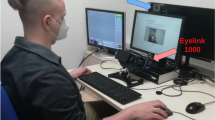Abstract
The recently emerging paradigm of Active Vision advocates studying visual problems in form of modules that are directly related to a visual task for observers that are active. Along these lines, we are arguing that in many cases when an object is moving in an unrestricted manner (translation and rotation) in the 3D world, we are just interested in the motion's translational components. For a monocular observer, using only the normal flow — the spatio-temporal derivatives of the image intensity function — we solve the problem of computing the direction of translation and the time to collision. We do not use optical flow since its computation is an ill-posed problem, and in the general case it is not the same as the motion field — the projection of 3D motion on the image plane. The basic idea of our motion parameter estimation strategy lies in the employment of fixation and tracking. Fixation simplifies much of the computation by placing the object at the center of the visual field, and the main advantage of tracking is the accumulation of information over time. We show how tracking is accomplished using normal flow measurements and use it for two different tasks in the solution process. First it serves as a tool to compensate for the lack of existence of an optical flow field and thus to estimate the translation parallel to the image plane; and second it gathers information about the motion component perpendicular to the image plane.
Similar content being viewed by others
References
Adiv G (1985) Determining 3D-motion and structure from optical flow generated by serveral moving objects. IEEE Trans Pattern Anal Machine Intell PAMI-7:384–401
Aloimonos JY (1990) Purposive and qualitative active vision. Proc. DARPA Image Understanding Workshop, pp 816–828
Aloimonos J, Brown CM (1984) Direct processing of curvilinear sensor motion from a sequence of perspective images. In Proc Workshop on Computer Vision: Representation and Control, pp 72–77
Aloimonos J, Brown CM (1989) On the kinetic depth effect. Biol Cybern 60:445–455
Aloimonos J, Weiss I, Bandopadhay A (1988) Active vision. Int J Comput Vision 2:333–356
Bajcsy R (1985) Active perceptive vs. passive perception. In Proc. IEEE Workshop on Computer Vision, pp 55–59
Bandopadhay A, Ballard DH (1991) Egomotion perception using visual tracking. Comput Intell 7:39–47
Fermüller C, Aloimonos Y (1991) Estimating 3-D Motion from Image Gradients. Technical Report CAR-TR-564, Center for Automation Research, University of Maryland
Horn B, Schunck B (1981) Determining optical flow. Artif Intell 17:185–203
Horn BKP, Weldon J (1987) Computational-efficient methods for recovering translational motion. In Proc International Conference on Computer Vision, pp 2–11
Koenderink J (1986) Optic flow. Vision Res 26:161–180
Koenderink J, van Doorn A (1975) Invariant properties of the motion parallax field due to the movement of rigid bodies relative to an observer. Opt Acta 22:773–791
Longuet-Higgins HC, Prazdny K (1980) The interpretation of a moving retinal image. Proc R Soc London B 208:385–397
Marr D (1982) Vision. Freeman, San Francisco
Negahdaripour S (1986) Direct passive navigation. PhD thesis, Department of Mechanical Engineering, MIT, Cambridge, Mass
Sharma R, Aloimonos J (1991) Robust detection of independent motion: an active and purposive solution. Technical Report CAR-TR-534, Center for Automation Research, University of Maryland
Spetsakis ME, Aloimonos J (1990) Structure from motion using line correspondences. Int J Comput Vision 4:171–183
Spetsakis ME, Aloimonos J (1988) Optimal computing of structure from motion using point correspondence. In Proc International Conference on Computer Vision, pp 449–453
Taalebi-Nezhaad MA (1990) Direct recovery of motion and shape in the general case by fixation. In Proc DARPA Image Understanding Workshop, pp 284–291
Tsai RY, Huang TS (1984) Uniqueness and estimation of three-dimensional motion parameters of rigid objects with curved surfaces. IEEE Trans Pattern Anal Machine Intell PAMI-6:13–27
Ullman S (1979) The interpretation of visual motion. MIT Press, Cambridge, Mass
Verri A, Poggio T (1987) Against quantitative optic flow. Proc IEEE International Conference on Computer Vision
Waxman AM Kamgar-Parsi B, Subbarao (1987) Closed-form solution to image flow equations for 3D structure and motion. Int J Comput Vision 1: 239–258
Author information
Authors and Affiliations
Rights and permissions
About this article
Cite this article
Fermüller, C., Aloimonos, Y. Tracking facilitates 3-D motion estimation. Biol. Cybern. 67, 259–268 (1992). https://doi.org/10.1007/BF00204399
Received:
Accepted:
Issue Date:
DOI: https://doi.org/10.1007/BF00204399




